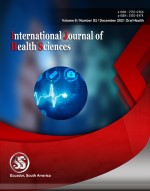Extraction, characterization and pharmacological activity and evaluation of various extracts of calotropis procera leaves
Keywords:
Calotropis procera, crude extract, anti-rheumatic arthritis activityAbstract
All over Saudi Arabia, the medicinal plant Calotropis procera (C. procera) is a common wild shrub. We looked into the phytochemical makeup and several extracts of C. procera in this work. The presence of different ingredients was checked in all extracts. Table displays the findings of this exploratory phytochemical investigation. Following a phytochemical analysis, it was discovered that Calotropis procera contains alkaloids, steroids, flavonoids, tannins, and terpenoids. To separate the active compounds that might have pharmacologically active ingredients, a TLC chromatographic research was conducted. Ethanol and chloroform extract of Calotropis procera leaves demonstrate the presence of flavonoids and phenolic substances in preliminary phytochemical testing. Additionally, the TLC of both extracts reveals the presence of several phytometabolites. After collection of all fractions of both ethanol and chloroform extract, these fractions then screened for anti-rheumatic arthritis activity. Results depict that 150 mg/kg of crude extract and ethanolic fraction on 10th day showed more superior repression of paw edema i.e., 80.26% and 81.25% (p < 0.001) as compared to 79.56% reduction in paw edema by 100 mg/kg aspirin on 10th day.
Downloads
References
Ahlmen, M., Svenson, B., Albertson, K., Forslind, K. and Hafstrom, I.(2010). Influence of gender on assessments of disease activity and function in early rheumatoid arthritis in relation to radiographic joint damage. Ann Rheum Dis. 69(1):230-3.
Ahmed. S. (2010). Green tea polyphenol epigallocatechin 3-gallate in arthritis: progress and promise. Arthritis research & therapy 12(2): 1-9.
Ajazuddin and saraf S., (2010). Evaluation of physicochemical and phytochemical properties of Safoot-E-Sana, a unani polyherbal formulation. Pharmacognosy. Res. 2(5):318-22.
Al Sulaibi M.A.M., Thiemann C., Thiemann T. Chemical constituents and uses of Calotropis procera and Calotropis gigantea—A review (Part I—The plants as material and energy resources) Open Chem. J. 2020;7:1–15. doi: 10.2174/1874842202007010001.
Al-Quwaie D.A.H. Bacterial community dynamics with rhizosphere of Calotropis procera and Senna alexandrina desert plants in Saudi Arabia. Bioinformation. 2020;16:567–578. doi: 10.6026/97320630016567.
Babu, SAR., Karki, SS., (2011). Anti-inflammatory activity of various extracts of roots of Calotropis procera against different inflammation models. International journal of pharmacy and pharmaceutical sciences, 3(3): 191-194.
Batool H., Hussain M., Hameed M., Ahmad R. A review on Calotropis procera its phytochemistry and traditional uses. Big Data Agric. 2020;2:29–31. doi: 10.26480/bda.02.2020.56.58.
Moustafa A.M.Y., Ahmed S.H., Nabil Z.I., Hussein A.A., Omran M.A. Extraction and phytochemical investigation of Calotropis procera: Effect of plant extracts on the activity of diverse muscles. Pharm. Biol. 2010;48:1080–1190. doi: 10.3109/13880200903490513.
Nascimento T.L., Oki Y., Lima D.M.M., Almeida-Cortez J.S., Fernandes G.W., Souza-Motta C.M. Biodiversity of endophytic fungi in different leaf ages of Calotropis procera and their antimicrobial activity. Fungal Ecol. 2015;14:79–86. doi: 10.1016/j.funeco.2014.10.004.
Rani R., Sharma D., Chaturvedi M., Yadav J.P. Antibacterial activity of twenty different endophytic fungi isolated from Calotropis procera and time kill assay. Clin. Microbiol. 2017;6:1000280. doi: 10.4172/2327-5073.1000280.
Published
How to Cite
Issue
Section
Copyright (c) 2021 International journal of health sciences

This work is licensed under a Creative Commons Attribution-NonCommercial-NoDerivatives 4.0 International License.
Articles published in the International Journal of Health Sciences (IJHS) are available under Creative Commons Attribution Non-Commercial No Derivatives Licence (CC BY-NC-ND 4.0). Authors retain copyright in their work and grant IJHS right of first publication under CC BY-NC-ND 4.0. Users have the right to read, download, copy, distribute, print, search, or link to the full texts of articles in this journal, and to use them for any other lawful purpose.
Articles published in IJHS can be copied, communicated and shared in their published form for non-commercial purposes provided full attribution is given to the author and the journal. Authors are able to enter into separate, additional contractual arrangements for the non-exclusive distribution of the journal's published version of the work (e.g., post it to an institutional repository or publish it in a book), with an acknowledgment of its initial publication in this journal.
This copyright notice applies to articles published in IJHS volumes 4 onwards. Please read about the copyright notices for previous volumes under Journal History.
















